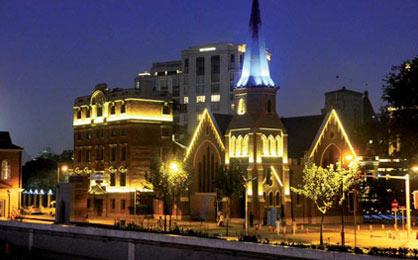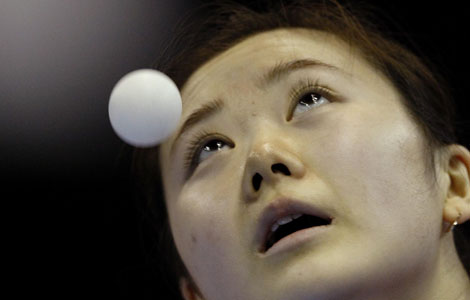The brilliant bund
Updated: 2011-12-02 09:08
By Shi Yingying (China Daily)
|
|||||||||
|
 A night view of a renovated building at the northern end of the Bund. The Bund, through years of makeover efforts, is becoming a place that blends history, luxury and culture. [Yang Yi / for China Daily]
|
Peace Hotel, 82 years old, reopened last year after a three-year renovation that cost $64 million (48 million euros). The century-old No 2 on the Bund, a couple of hundred meters down the road, and which was out of use for about 10 years, has been restored to its former glory and reopened as the Waldorf Astoria Shanghai, the brand's first hotel in Asia, in April.
Siem Bierman, a Dutch businessman, says that what attracts him to the Bund is the entertainment and hospitality. He says that 80 percent of the Bund's restaurants take part in Restaurant Week, an event he promotes, in which prices at dozens of restaurants in the city are cut.
Bierman says he visits these spots once a week, no matter whether it's a wine tasting, afternoon tea at the Peninsula or dinner at Hyatt on the Bund.
"If I have guests visiting from abroad I will bring them to dine at the Bund. Here is the thing: it's somewhere local Chinese wouldn't usually try. They come for the view and leave after taking photos, but you would be able to find more international businessmen in all of these fine-dining restaurants and bars.
The Bund's high-end hospitality market has emerged in the past five years, he says. "Before you only had M on the Bund and Three on the Bund, but in the past five years, especially since the Expo, there has been a surge."
When it became clear that the Bund was bursting at the seams and could take no more luxury, the Huangpu district government came up with a plan to turn the 150-year-old Shiliupu Dock, the abandoned pier that sits at the southern end of the Bund, into a creative hub by attracting designer hotels, expensive restaurants and shops.
It is part of the three-year Bund renovation project that ended in August. Yet for older people from Shanghai, Shiliupu Dock is nothing more than a poor residential area with poor surroundings.
"The thing I can't forget about my old house is its smell," says Gu Ren, 52, who lived next to the dock for more than 10 years.
"We were next to a vegetable market, a fish market and hundreds of vendors selling groceries, so the smell was a mixture of those."
Keith Barr, managing director of InterContinental Hotels Group Greater China, reckons the dock may be perfect for the designer hotel Indigo, which has set up shop there.
"Indigo is famous for its concept of reflecting the stories of the neighborhood," Barr says. "I guess with its 150-year history, the dock has lots of great stories to tell."
Indigo established its property at Shiliupu as the first Indigo in the Asia-Pacific region a year ago. Just a few blocks away is the newly opened boutique hotel Waterhouse. Its management's philosophy on choices of location mirrors that of Indigo.
"With high-end hotels, luxury restaurants and shops fully packed on the Bund, I believe South Bund is the upcoming star for both tourists and local residents," says Anna Wang, spokeswoman for the hotel.
Both hotels are in the cool docks area, a new commercial venture offering retail outlets, restaurants and bars.











